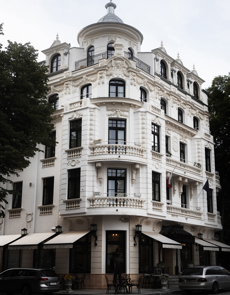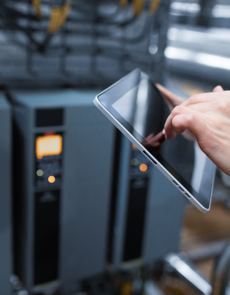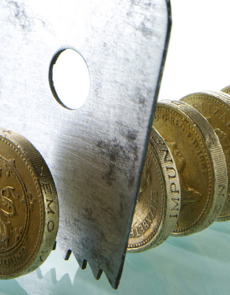Restaurant maintenance checklists: An ultimate guide
When it comes to restaurant maintenance (as with most other things in life), we all know that being proactive is far more effective and efficient than being reactive to problems when they happen. And yet, when it comes to restaurant maintenance, many restaurant operators find themselves consistently pushing it to the bottom of their to-do list because there always seems to be something more urgent (or, let’s face it, more interesting) to do. That’s fine until a problem disrupts service delivery. At that point, the day to day work has to be set to one side while you deal with a headache that could potentially have been prevented, and nobody wants that.
So if a proactive approach is the right way to manage your restaurant maintenance, how can we implement a process that helps you keep on top of it? A restaurant maintenance checklist might be a good place to start.
As the leading supplier of specialised software for thousands of hospitality venues across the UK, Access Hospitality helps restaurants to reduce manual task loads, increase profitability and deliver an exceptional experience to customers. We know that restaurant maintenance can be a chore, which is why we’re happy to share our tips and tricks to help you keep a tight grip on it.
In this guide, we’ll be discussing everything you need to know, including how to create and implement a successful maintenance checklist, and the benefits you can expect when you stay on top of your restaurant maintenance.
This article includes:
So, what is preventative maintenance for restaurants?
Put simply, preventative maintenance is a crucial way to keep necessary equipment and infrastructure working as it should. It's the ongoing care of appliances and systems needed for daily operations to run smoothly. By taking a proactive approach and regularly carrying out scheduled maintenance, you decrease the likelihood of unexpected failures in the future.
What are the benefits of effective restaurant maintenance?
Running successful hospitality venues may at times feel like a circus act; you need to juggle tasks, walk the tightrope of profitability, and at times it feels as though you need a crystal ball to stay ahead of problems. So, with that in mind, what benefits can you expect when you implement a clear process for proactive restaurant maintenance in your business?
It saves time
When you’re running a busy venue, finding ways to save time is always a bonus. By maintaining equipment and facilities regularly, you reduce the likelihood of unexpected breakdowns that can disrupt normal service.
It saves you money
Regular maintenance can prevent costly repairs, boosting profitability in the long term. Equipment that is well used can break without warning, which is why it's imperative that regular checks are carried out before this happens. By extending the life of your equipment, you lower operational costs, leaving more funds available for other areas of your business. When it comes to saving money, there are lots of ways facility management software can reduce costs.
It minimises unplanned downtime
We know that unplanned downtime can be disastrous in a restaurant. A broken piece of kitchen equipment can halt service and lead to lost revenue. Preventive maintenance reduces the risk of such incidents, keeping your restaurant running smoothly at all times.
It improves the customer experience
Cleaning and servicing essential kitchen equipment like ovens and fryers helps them to last longer, ultimately saving you money and ensuring the safety of your staff. This also leads to a more consistent dining experience for customers, and a more profitable business in the long term.
What to include in your restaurant maintenance checklist
To help you stay on top of your maintenance tasks, here’s a checklist of equipment and infrastructure you might want to check regularly to make sure it’s working as it should. We’ve even broken it down into different areas of your restaurant, so you can make sure all areas are covered:
Front of House:
Flooring: Inspect your floors periodically for wear and tear, and ensure it is cleaned regularly to ensure the safety of your staff and customers. Some cleaning companies offer professional maintenance contracts to upkeep the condition of your flooring.
Lighting: Consider checking light bulbs and other fixtures weekly to make sure they’re not dim or flickering. This can affect the overall look and ambiance of a venue, and it can potentially cause a safety hazard if you’re not on top of it.
Seating: Ensure chairs and tables are stable and free from any damage, and all upholstery is kept clean and fresh.
Kitchen:
Cooking Equipment: To make sure you’re adhering to food safety regulations, and that food is being prepared in a clean environment, you’ll need to clean ovens, grills, and fryers daily. Consider scheduling professional servicing of this equipment periodically, so you can fix any issues before they halt daily operations.
Refrigeration Units: Monitor temperatures of fridges and clean them often. It might be worth scheduling bi-annual inspections in advance, so you know that food storage units are always kept in check .
Ventilation Systems: Clean grease filters weekly, and have HVAC systems inspected and cleaned professionally every few months.
Interior:
Plumbing: Leaks can often go unnoticed until they become a problem, so make sure checking under sinks becomes routine for your staff. Customer toilets should also be inspected and cleaned throughout the day, to avoid damage to your venue's reputation and potential safety hazards.
Pest Control: For anywhere where food is prepared, pests can become a problem. Make sure that you’re conducting daily inspections to ensure your restaurant is clear, and maintain regular pest control treatments as a preventive measure.
Exterior:
Outdoor Signage: It’s something you might not think about, but outdoor signs are the first thing your customers will see before entering your restaurant. Make sure they’re being inspected weekly for damage, and cleaned regularly.
Landscape: Similarly to outdoor signage, it’s important that guests are welcomed in a clean environment, and this starts before they even walk through the door. Maintain pathways and greenery, and keep them hazard free at all times.
Parking Areas: If applicable, car parks should always be kept in good condition. Ensure that surfaces are in good repair, clear of any debris, and well-lit.
Equipment:
POS Systems: For equipment that is used daily, it’s vital that it is always in full working order. Any restaurant software that you use needs to be functioning properly so make sure updates are carried out successfully, and carry out monthly checks.
Fire Safety: The most common cause of fires in restaurants is equipment breakdown, so as well as implementing preventative maintenance to reduce this risk, make sure extinguishers and alarms are checked monthly, and make sure you’re scheduling regular inspections.
How to Implement effective restaurant maintenance processes
So, we know what preventative maintenance is, and which areas need to be covered in a checklist, but how can we implement it seamlessly into operations? And if you already have a system in place, is it working well? Let’s look at some strategies to make your restaurant maintenance as efficient as possible:
Create a maintenance schedule: By implementing a schedule that outlines when specific maintenance tasks should be carried out, you make sure that nothing is overlooked and all areas are covered. Not only does this give you peace of mind that all equipment is functioning as it should, it also keeps your venue looking clean and inviting, which is key to impressing customers. A schedule also prevents confusion and staff getting overwhelmed, as you can plan your maintenance around service hours and busy periods.
Assign responsibilities: To keep workload equal amongst staff, and promote a culture of accountability, it could be worth designating key maintenance tasks to specific team members. This way, you can be confident that equipment is being checked regularly, and if it isn’t, you can identify inefficiencies quickly that could be slowing you down and affecting the venue's profitability.
Establish procedures: Develop SOPs that you know are efficient for routine maintenance tasks. If there are set procedures in place, this prevents any confusion and makes sure tasks are completed consistently across operations. This can also come in handy when training a new hire, as you already have clear processes in place for them to follow.
Consider using technology: Using good restaurant maintenance software can significantly streamline your maintenance processes. Rather than getting overwhelmed with piles of paper, the right software can give you an accurate overview of all property maintenance work being carried out and what it’s costing you. This enables you to reduce admin, manage costs and make speedy fixes, so you can feel confident that nothing is falling through the cracks.
Ready to implement effective restaurant maintenance today?
In this article, we’ve covered everything from what preventative maintenance is and the benefits you can unlock, to what to include in your checklist and how to implement it successfully.
It’s clear that when you’re trying to make your restaurant maintenance more efficient and consistent across the board, planning ahead and taking a proactive approach is key. The bottom line is, when you make preventive maintenance a focus across operations, you can expect to see significant returns in profitability.
At Access Hospitality, our software can help you introduce restaurant maintenance in a streamlined way, so you can start seeing the benefits quickly. Our specialist hospitality facility management software keeps everything in one place, so you’re not getting bogged down and overwhelmed with paper checklists and admin nightmares.
If you’re ready to learn more, download the guide now. Or if you’d like to speak to one of our team about how Access Hospitality can help, get in touch with us.
Get effective oversight and control across all your sites with our property maintenance system
Related reading
View our resources to support you with facility management





